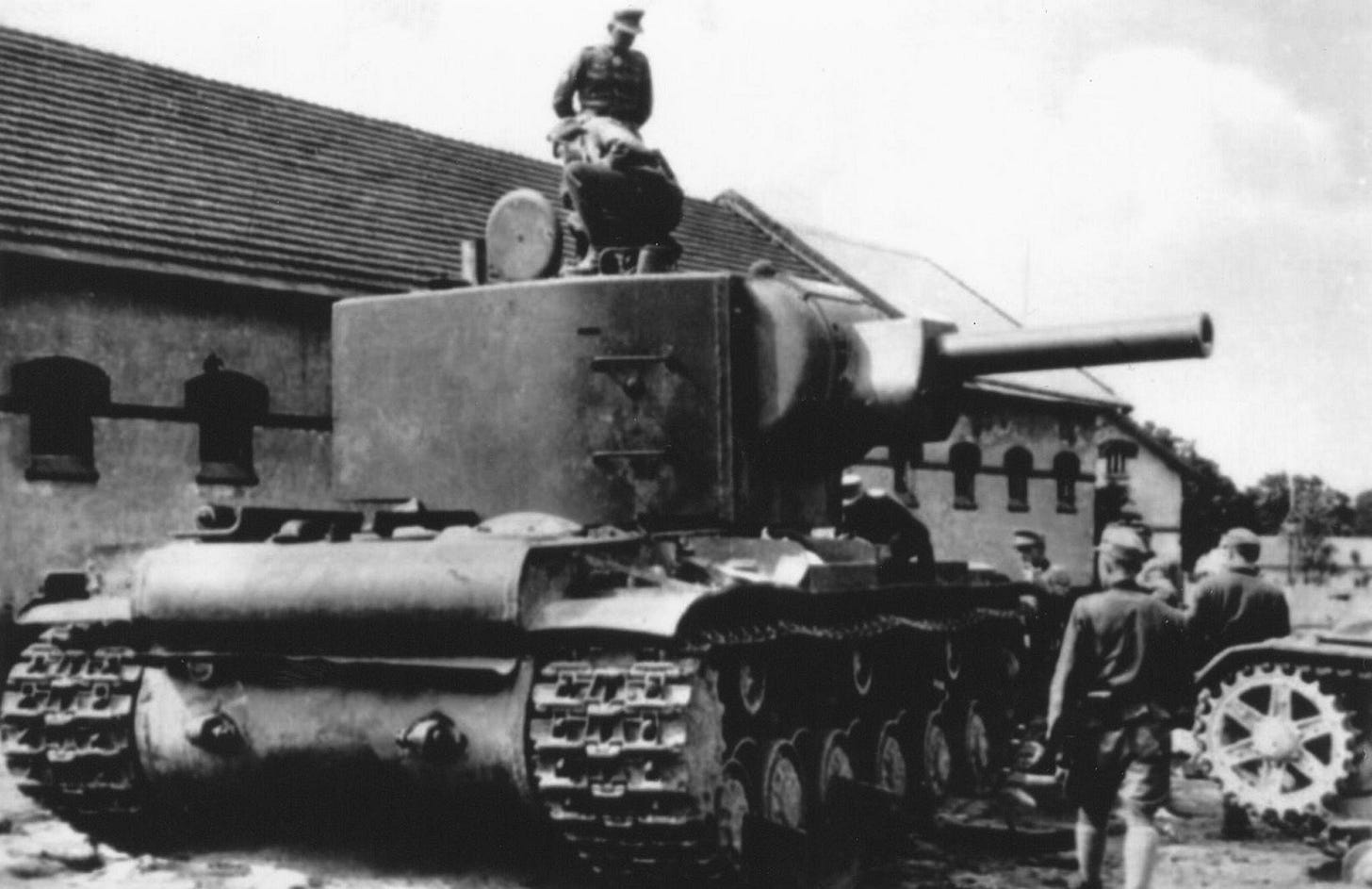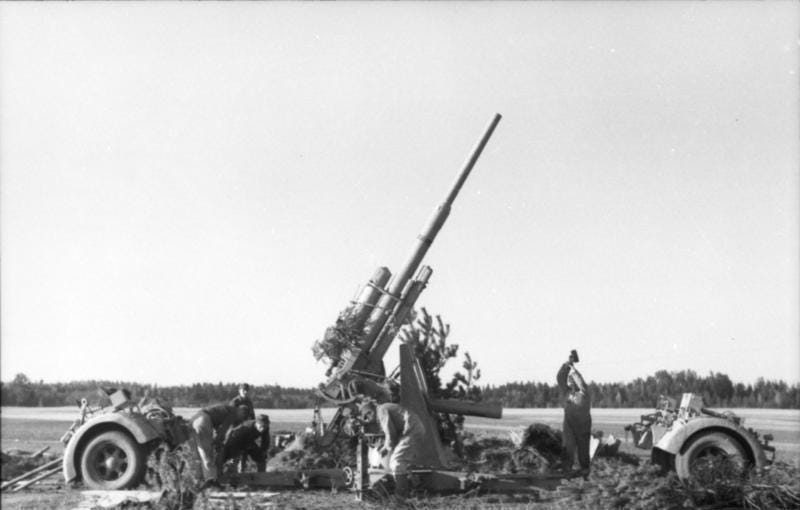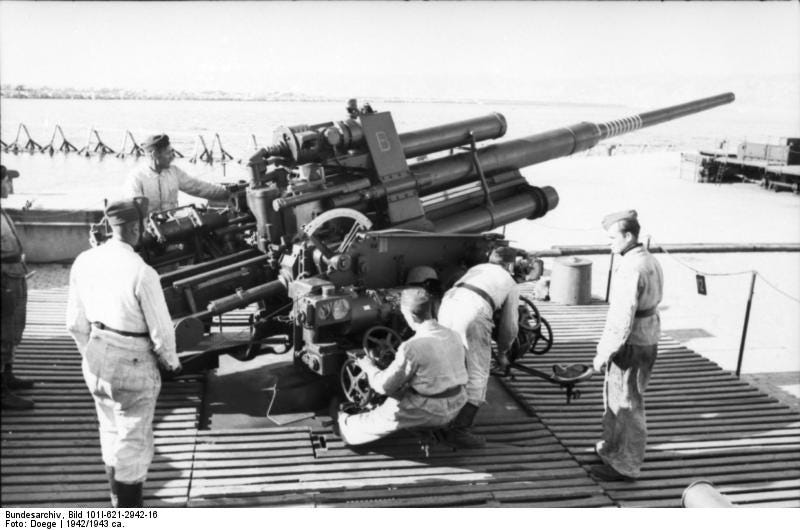The Germans approach Leningrad
8th September 1941: German 88s halt Soviet counter-attack with heavy tanks


On the Eastern front the Soviet position was again looking very precarious. Army Group South was plunging into the Ukraine towards Kiev whilst in the north Leningrad was almost encircled.
There was a last desperate push before the city became almost completely besieged, the only access to the city being across Lake Ladoga.
Walter Lubbeck was fighting with Army Group North on the approaches to Leningrad. On the 8th September he watched a Russian counter-attack along the shores of the Gulf of Finland from the vantage point of the cliffs above:
Two German 88-millimeter Flak guns deployed on the high ground beside me. Though capable of indirect fire, the 88s were also designed to fire level, like giant rifles.
Seven KV-ls and KV-2s soon lumbered into view with troops on foot following close behind them. These larger tanks were joined by a couple of smaller Czech T-35s. Having reached a point two miles from their frontlines, the greatly diminished Soviet armored formation would advance no further.
As I watched with fascination, the crews manning the 88s quickly scored a hit on the lead tank. Unable to maneuver or to elevate their barrels high enough to hit targets on top of the cliff, the remaining Russian armor was in a helpless and hopeless position. Over the next 20 minutes, the deadly 88s proceeded to pick off one after another of the KV's and T-35's trapped on the street below.

Under continual machine-gun fire, the surviving tank crews and infantry attempted to escape back the way they had come, but found their route blocked. In an area just beyond my field of vision, our Pionieers had moved in behind them to detonate large explosives that destroyed the road, preventing their retreat.
In desperation, many of the enemy troops jumped into the water, but few succeeded in making it back to their lines. By the following day, the remaining Soviet forces in the Uritsk and Petergof areas were eliminated. This ill-conceived fiasco had cost the Red Army 35 tanks, 1,369 dead, and 294 prisoners.
Over time, the Russians would increasingly employ large tank formations in their operations. To meet this threat, a German division had a number of options.
In the first instance, each regiment possessed an anti-tank company equipped with high velocity artillery pieces. While these companies were usually able to cope with enemy armor, the divisional artillery might also be used in extreme cases.
As the action on the Uferstrasse demonstrated, it was, however, the 88-millimeter anti-aircraft artillery that proved to be the most effective German anti-tank weapon of the war, even though it was typically used only in crisis situations when enemy armor came in mass or had achieved a breakthrough in our lines.1



